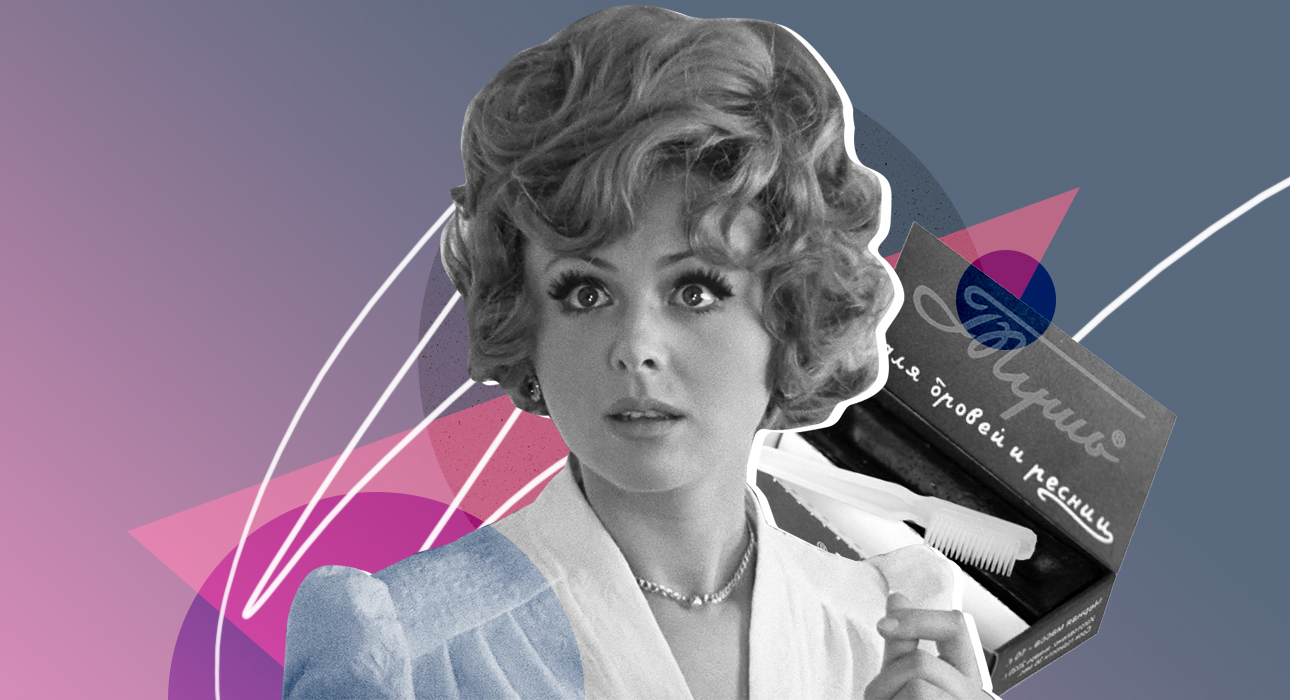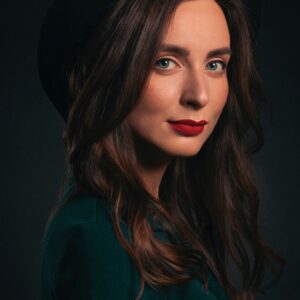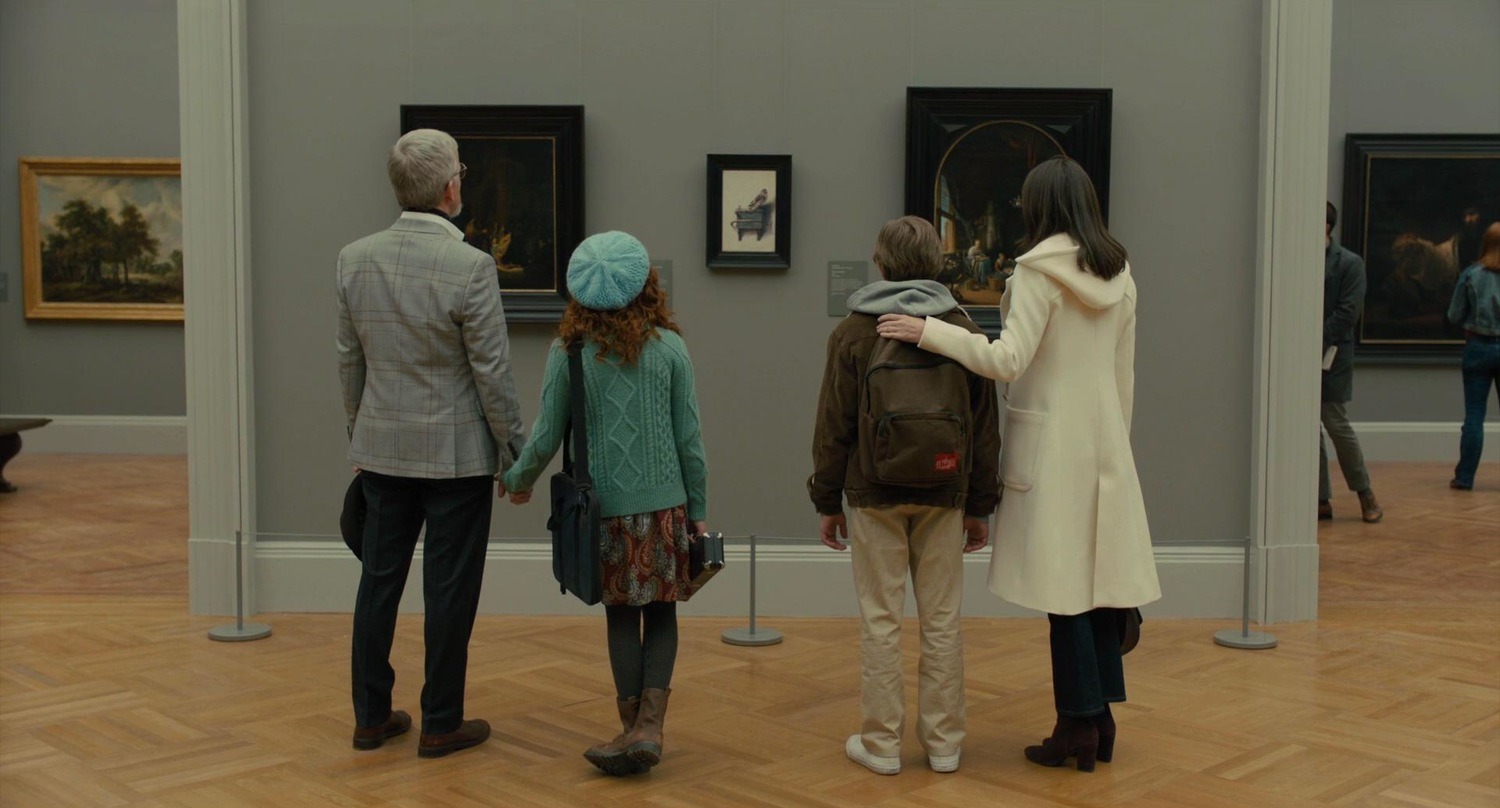
In the sixties of the last century, Soviet women are no longer dyed with beets and dusted with flour. Cosmetics were produced in the USSR, but not yet on a scale to meet everyone’s needs. Therefore, the girls sometimes had to go to extreme tricks to look like a movie star. For example, curl your lashes with a hot knife or lighten your hair with hydrogen peroxide.
Mascara – “spit”, powder and needle – triple for lush eyelashes

The only mascara in the arsenal of Soviet fashionistas was Leningradskaya. In a small cardboard box was a compressed black mass and a brush. To compensate for the eyelashes, it was necessary to add a little liquid to the mascara, but often for speed and convenience, they spit into it, as the mistress of the director Yakin did in the movie “Ivan Vasilyevich Changes Profession.”

Mascara created the perfect effect of spider legs, but girls rarely liked sticking eyelashes, so the next step was to separate them. To do this, they used quite radical devices – a needle or a needle. The girls sat for a long time in front of the mirror and carefully parted the hairs with a sharp tip. And for added volume, some powdered their lashes before applying mascara.
No curling iron and curlers required if you have cutlery

Needle antics aren’t the only thing lashes have survived. In the absence of a curler, the girls adapted a table knife for curling. Heated and leaned against the eyelashes, lifting them. The fork was also used – curls were curled with it. This is clearly described by Andrey Bitov in the novel “House of Pushkin”, especially when he looks at how the heroine’s lover brings beauty:
“… Satisfied with the sooty-iron fork that Faina had gone to for gas-heating in the kitchen, and to which she ran back, she put her hand to the side with a red-hot fork, and waved it (she wound a thread around this fork, making the last and most impressive curl) and brushed her eyelashes. a table knife, which he curls with incredible dexterity, and a needle with which he separates the eyelashes, already made … “

The whizzers have recently learned the Soviet lifehack – Tik-Tok users have started to drastically curl their eyelashes with anger, attention, spoon. We recommend that you do not check such beauty tips yourself – you can not only burn with negligence, but also injure your eyelashes.
The best assistants for perfect styling are beer and sugar water.

Babette Goes to War starring Brigitte Bardot revolutionized the world of hairstyles. Smooth neat curls were replaced by voluminous careless styling, named after the main character of the film. Therefore, the sixties were the heyday of the popularity of poufs, not only in Europe, but also in the Soviet Union. This hairstyle was made at the hairdresser and used for about a week, first fixed with a fixer.

The legendary hairspray “Charm” appeared only ten years later, so they used improvised means. There were several options – dilute with cologne, use furniture varnish, sugar water or beer. As they say, choose what you want.
Lipsticks “made by myself”

The range of lip products in the Soviet Union was limited to lipstick. It is produced by several factories – Northern Lights, Novaya Zarya, Svoboda and Nevskaya Kosmetika. There were several shades produced, but they were quite saturated – hot pink, carrot, brown and red. They tried to use them economically and all the remains were put into production. When the main part of the lipstick is finished, it is removed with a match so that a few remnants of lipstick are collected, melted in a water bath and poured into a small container. The result was a new unique shade.

Gloss and lip pencils in the USSR were also able to replace them. They used Mink Vaseline instead of the former, and colored pencils from the Young Artist set instead of the latter. The girls followed them to the stationery department of Detsky Mir.
hydrogen peroxide for blonde

The Soviet girl also wanted to cut her bob when she broke up with her boyfriend and dye her hair again with the arrival of spring. If there were no problems with the implementation of the first, then the situation with the second was more complicated. There were only two hair dyes: henna and basma. Accordingly, the color palette was limited to either radical black or fiery red. Therefore, those who wanted to become a blonde, or at least approach her, brightened their hair with a decoction of chamomile. And the most hopeless – hydrogen peroxide. The substance in contact with oxygen is oxidized, as it colors the natural pigment of the hair. But with a maximum of 2-3 tones and a reddish tint. Often, after such beauty experiments, girls restored their hair with castor oil.
Art crayons and eye pencils

Cosmetic pencils for eyes, eyebrows and lips practically did not differ from pencils from an art store in the softness of the lead. Therefore, for the sake of economy, they bought the latter and moistened the pen with the tongue to soften it a little and drew an arrow. But there was another popular way of aligning the eyes – a match was lit, and then the burnt tip was used as a black eyeliner.

The dream of any girl in the 70s and 80s was gray-blue shades. They are usually produced in Poland, and when they appeared in Russia, a mile-long line formed near the entrance to the cosmetics store. Those who don’t have time or can’t afford to grab a pair are saved by school crayons and drawing pencils. Crayons are ground into a fine powder, a drop of water is added and applied to the eyelids. Another option was art pencils. The pencil was also crushed and then applied to the eyelids.
Homemade foundation instead of “ballet”

The first Soviet foundation appeared on the shelves in 1981. The legendary “Ballet” of the “Svoboda” factory lay on the skin in a thick, dense layer and, according to Soviet girls, felt like a mask on the face, although it created the effect of smoothness. Therefore, some, who want to achieve a perfect, but lighter tone, dilute the “Ballet” with a moisturizer or create their own recipe – they mix a regular cream with loose powder. At that time the only alternative was the Jame foundation. It was also produced at the Svoboda factory, but in collaboration with the French brand L’Oréal Paris. It was much more expensive than Cream Ballet, many could only dream of.
Source: People Talk
Elizabeth Cabrera is an author and journalist who writes for The Fashion Vibes. With a talent for staying up-to-date on the latest news and trends, Elizabeth is dedicated to delivering informative and engaging articles that keep readers informed on the latest developments.





